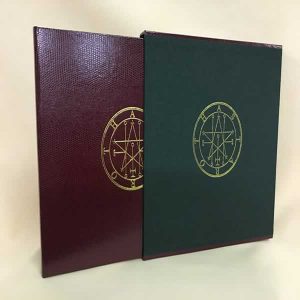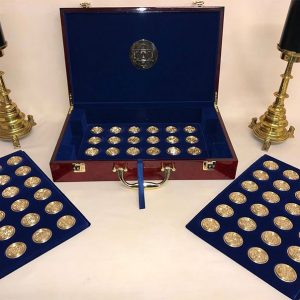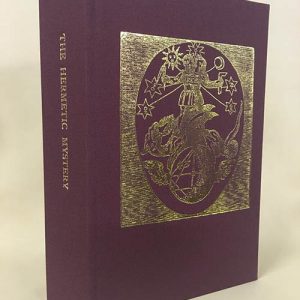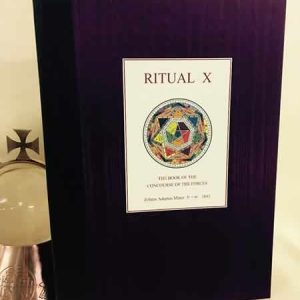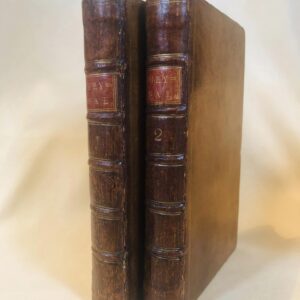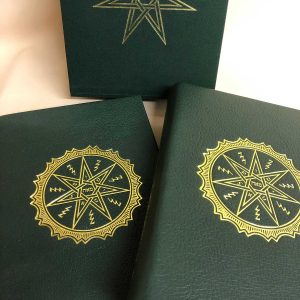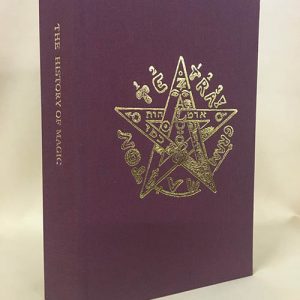NECROMANCY ELUCIDATED
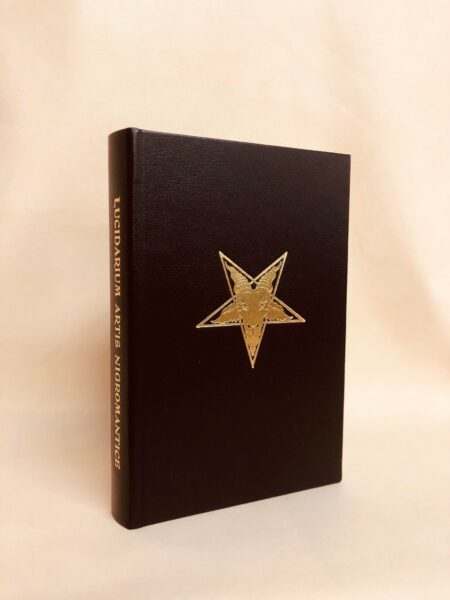
or
‘Lucidarium Artis Nigromantice’

Necromancy Elucidated: ‘Lucidarium Artis Nigromantice’ full black leather binding.
Limited to 155 copies with red French marbled endpapers, gilt goatshead to front, gilt lettering to spine.
DESCRIPTION : large octavo 320pp Scholarly edition by Joseph Peterson : Since it first appeared over 500 years ago, the ELUCIDATION OF NECROMANCY (Lucidarium Artis Nigromanticê) and the closely related Heptameron have become essential guides
for individuals seeking to call on angels and other supernatural beings for help. Countless amulets and pendants have been made with its designs, and elements have repeatedly been adapted and incorporated into other manuals of ritual magic. In spite of this, neither a critical edition nor a translation has been previously published. In particular three manuscripts of Lucidarium have come to light recently, which provide a clearer and fuller ritual than the printed Heptameron. For example, they add critical instructions for making the seven angel sigils, which have become so widely known. Together they bring to life this important current of esoteric tradition, showing how it has been repeatedly adapted and used by different individuals for centuries.
- This is a complete system of magic, including how to communicate with and seek help from holy angels and other supernatural beings.
- One of the most influential texts on medieval, Renaissance, and modern magic, Lucidarium is translated here for the first time, along with a new translation of Heptameron—the first since the seventeenth century.
- Extensively illustrated, including the earliest-known versions of the angel sigils.
- Includes the complete Latin text, carefully checked against known manuscripts, and related texts in Latin, French, Italian, German, and English.
- Largely ignored by historians until recently, this text is an important witness to the transmission of Jewish mysticism to Christians.
- Introduction and extensive commentary by renowned scholar Joseph H. Peterson.


